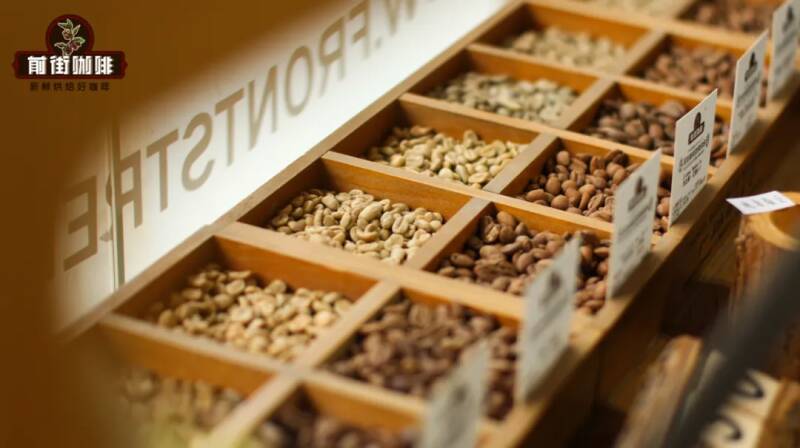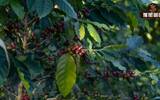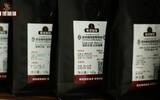What does coffee bean blending mean? What is the difference between Italian blended coffee beans and single coffee beans? Should the match be cooked raw or cooked?
"blending coffee beans" refers to beans made from more than two single coffee beans from different places, different producing areas, or different treatments. At first, people blended coffee beans both to reduce costs and to dilute the importance of each bean so that the taste remained stable. However, with the development of the times, coffee bean blending has begun to be produced in order to improve the quality of coffee, which is now the most popular. In "Why does hand flush also start to use mixed beans? Qianjie mentioned in this article that because it is difficult for a single cup of coffee to perform as well in flavor and taste, more and more people are starting to use mixed beans in hand-brewed coffee. Because through the form of matching, we can make a bean with excellent taste, taste and performance, and can also show its uniqueness, so why not do it?

But because there are two modes of blending coffee beans: "raw" and "cooked", friends often ask: should coffee beans be cooked or cooked?

Should you choose to mix coffee beans raw or cooked? The so-called "raw" means that the coffee beans to be mixed are mixed in proportion before baking, and then a piece is put into the oven for baking. Because the coffee beans are all raw when they are made up, people call them "raw beans".
After knowing the spelling, proficiency is easy to understand. The so-called cooked beans means that the coffee beans to be mixed are baked separately and then mixed in proportion after being baked into ripe beans. Because cooked beans are used for blending, it is called "cooked spelling".
Although it seems that the difference between the two lies only in the order in which they are matched, in fact, their nature is very different. The advantage of spelling is that when the amount of roasted beans is small, all the target coffee beans can be roasted in one batch, while cooked beans need to be roasted in multiple ovens according to the number of coffee beans mixed. For example, if you use two kinds of beans to mix, then you need to bake two stoves, if it is three, it is three. In comparison, the production done in one furnace not only saves the cost of gas and electricity, but also saves the baker a lot of time. But even so, not all matching schemes are suitable for life spelling. The reason is very simple, because it is unstable!
As said at the beginning of the front street, blending a coffee bean requires the use of coffee beans from different producing areas or different treatments. The moisture content, density and particle size of these coffee beans will be different. We all know that when cooking, we need to cook in different heat according to different ingredients, and so is the roasting of coffee beans. Different characteristics of beans correspond to different baking methods, if several beans with a large difference in size / density / moisture content are baked together, then baking is really difficult to underestimate. The less deeply you bake, the more difficult it is to bake. For beginners, there are likely to be two extremes: small / low density / low moisture content coffee beans are scorched, or large / high moisture content / high density coffee beans are caught.
In this way, the baked beans are not only lack of consistency in taste, but also different in extraction efficiency. Coffee beans that are less roasted are less easily extracted, while coffee beans that are less roasted are more likely to dissolve substances. If such beans are used in formal extraction, it is easy to produce uneven extraction. Therefore, proficiency can solve such a problem. We only need to bake several kinds of coffee beans separately, design different baking curves according to their own characteristics, so that they can achieve the same baking degree, and finally match, so that we can reduce the error between each other.
But the disadvantage is also mentioned in the front street, that is, when the baking quantity is small, it needs to be baked in multiple furnaces, and the cost in all aspects will be higher. At the same time, if you want all coffee beans to achieve almost the same baking degree, you need to have a more mature baking experience, otherwise it will greatly increase the cost of trial and error. All the matching in Qianjie adopts the way of familiar spelling, and the baking degree and blending ratio of each bean are constantly adjusted after the formulation of the matching plan, and finally a more satisfactory result is obtained. So, each has its own advantages. We can choose the matching plan according to the situation, and we don't have to stick to a certain form too much. So about matching, interested friends can move to this article to explain in detail "how to mix coffee beans?" "
-END-
Important Notice :
前街咖啡 FrontStreet Coffee has moved to new addredd:
FrontStreet Coffee Address: 315,Donghua East Road,GuangZhou
Tel:020 38364473
- Prev

What kind of cat is the cat of cat poop coffee? What are the stories about the origin of coffee? Who did the coffee shepherd boy say wrote it? Who is Shek Omar?
Today, in the 21st century,"coffee" is popular all over the world as one of the world's three major drinks. For many countries, coffee is not just a single daily drink, but also a local cultural symbol. Just like different countries have different specialty coffee, the legend about the origin of coffee is also due to the author's
- Next

Can Rose Summer be condensed? Can single coffee beans be used to make Italian cuisine? What does SOE mean?
As we all know, there are two main types of coffee beans sold on the market. One is single-type coffee beans used for single-type coffee, and the other is espresso beans used for espresso. Because Qianjie's main business is selling beans, I often encounter some customers with expensive single beans such as Guixia asking: This
Related
- Being chased out of the rain in front of Starbucks?! Store: Sheltering from rain under umbrellas poses a safety hazard
- The white moonlight has changed?! Lucky launches "Big Winter Pear American"
- Hand-brewed coffee three-stage method, high-sweet and universal brewing method to share! What does the high sweet water level of hand-brewed coffee mean?
- What is the difference between raw, refined and full espresso coffee? How to extract espresso and taste good?
- A complete list of coffee bean names and their meanings! What is Yejia Shefi coffee? Where is Mantelin coffee?
- What grade does Arida Manor Kaduai coffee beans belong to? What treatment is Arida ASD slow anaerobic sun exposure?
- The milk tea cup becomes smaller?! Overlord Tea Girl launches a new "Return to Yunnan" series
- Accused of selling counterfeit and high-priced coffee beans! Well-known boutique coffee brand "Oukelao" bowed and apologized!
- How to make espresso dumplings? Can I eat coffee and glutinous rice balls together?
- Save the unformed and stagnant powder cakes in one second! What is the problem with stagnant water in the powder bowl of the espresso machine?

